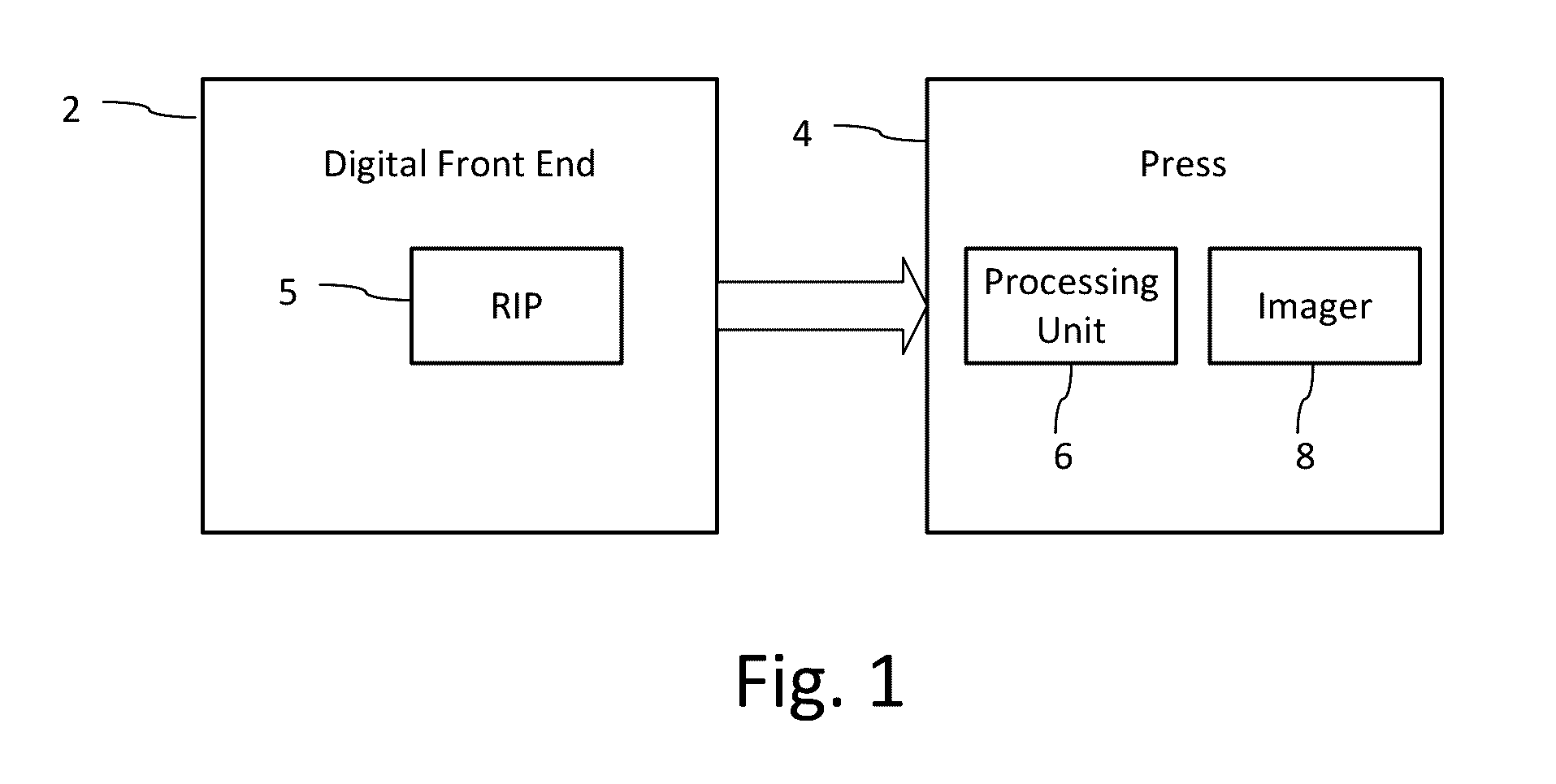Serialized digital watermarking for variable data printing
a variable data and digital watermarking technology, applied in image watermarking, instruments, computing, etc., can solve the problems of affecting the processing efficiency of rips, and consuming the processing capacity of rips, so as to reduce the processing complexity and slow down the press
- Summary
- Abstract
- Description
- Claims
- Application Information
AI Technical Summary
Benefits of technology
Problems solved by technology
Method used
Image
Examples
Embodiment Construction
[0021]In the VDP environment, the printing press has the capability to update the printed image per page through the use of digital press technology. This digital press technology includes, for example, Digital Offset Color (e.g., HP Indigo Digital Offset Color), or liquid electrophotography (LEP), dry toner electrophotography (DEP), and inkjet technology-based digital printing presses.
[0022]FIG. 1 is a diagram of a digital press system used in VDP. The digital press system includes a Digital Front End (DFE) 2 and a press 4. The DFE prepares digital image data for printing by the press and then transmits the data to the press. In particular, the DFE includes a Raster Image Processor (RIP) 5 that converts images and print instructions specified in a page description language (PDL), like above noted print file formats, into an image format compatible for printing by the press 4. This process of converting the contents of PDL files to bitmaps is sometimes referred to as rasterizing or ...
PUM
 Login to View More
Login to View More Abstract
Description
Claims
Application Information
 Login to View More
Login to View More - R&D
- Intellectual Property
- Life Sciences
- Materials
- Tech Scout
- Unparalleled Data Quality
- Higher Quality Content
- 60% Fewer Hallucinations
Browse by: Latest US Patents, China's latest patents, Technical Efficacy Thesaurus, Application Domain, Technology Topic, Popular Technical Reports.
© 2025 PatSnap. All rights reserved.Legal|Privacy policy|Modern Slavery Act Transparency Statement|Sitemap|About US| Contact US: help@patsnap.com



